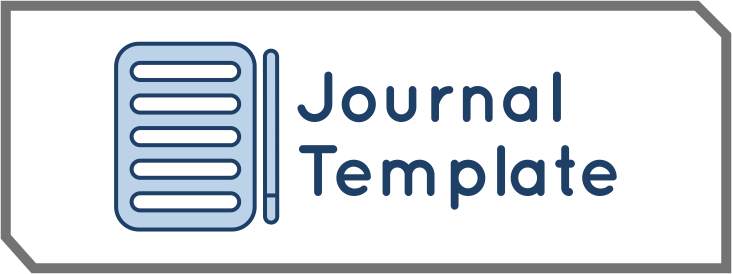Optimalisasi Pengolahan Menu Makanan Sehat untuk Pemenuhan Gizi Anak Pra Sekolah dengan Pemanfaatan Bahan Pangan Lokal
DOI:
https://doi.org/10.55606/jpikes.v5i3.6154Keywords:
Balanced Nutrition, Healthy Food Menu, Kindergarten, Local Food Ingredients, Preschool NutritionAbstract
Improving the nutritional quality of early childhood plays a very important role in supporting optimal growth and development, especially in the Bogor City area which still faces stunting problems. This activity aims to increase the understanding of kindergarten teachers and parents about the importance of balanced nutrition and the use of local food ingredients as well as serving healthy and attractive food. Seminars and workshops have been carried out, covering balanced nutrition materials, cooking techniques and serving healthy food menus, and the use of local food ingredients. In addition, the application of technology is carried out through mass media, YouTube, the Healthy Child Menu (MAS) booklet and the e-Mas application to disseminate information about the importance of balanced nutrition. Evaluation of this community service activity was carried out through pretests and posttests which showed a significant increase in participant knowledge, with a T = -3.500 and p value = 0.000, meaning there is an influence of knowledge about processing healthy food menus to fulfil the nutritional needs of pre-school children. This community service activity is expected to reduce the number of malnutrition in early childhood and encourage parents to use local food ingredients as an effort to maintain children’s health in kindergarten.
Downloads
References
Almatsier, S., Soetardjo, S., & Soekarti, M. (2017). Gizi seimbang dalam daur hidup kehidupan. PT Gramedia Pustaka Utama.
Ambarwati, E. R., Lusi, N., Nisa, R. M., & Azhari, R. A. (n.d.). Community empowerment in maternal and child health as an effort to increase health degree. AKBIDYO College of Health Sciences.
Beal, T., Tumilowicz, A., Sutrisna, A., Izwardy, D., & Neufeld, L. M. (2018). A review of child stunting determinants in Indonesia. Maternal and Child Nutrition, 14(4), 1–10. https://doi.org/10.1111/mcn.12617
Davidson, S. M., Dwiriani, C. M., & Khomsan, A. (2018). Densitas gizi dan morbiditas serta hubungannya dengan status gizi anak usia prasekolah pedesaan. Media Kesehatan Masyarakat Indonesia, 14(3), 251. https://doi.org/10.30597/mkmi.v14i3.4551
De Onis, M., Borghi, E., Arimond, M., Webb, P., Croft, T., Saha, K., De-Regil, L. M., Thuita, F., Heidkamp, R., Krasevec, J., Hayashi, C., & Flores-Ayala, R. (2019). Prevalence thresholds for wasting, overweight and stunting in children under 5 years. Public Health Nutrition, 22(1), 175–179. https://doi.org/10.1017/S1368980018002434
Denianus Nong Yendi, Y., Luh Putu Eka, N., & Maemunah, N. (2017). Hubungan antara peran ibu dalam pemenuhan gizi anak dengan status gizi anak prasekolah di TK Dharma Wanita Persatuan 2 Tlogomas Kota Malang. Nursing News, 2(2).
Eka Misbahatul Mar’ah, F. (2012). Model pengembangan pemenuhan kebutuhan gizi anak prasekolah berbasis. Jurnal, 121–130.
Fitria Budi Utami. (2020). The implementation of eating healthy program in early childhood. JPUD - Jurnal Pendidikan Usia Dini, 14(1), 125–140. https://doi.org/10.21009/141.09
Indonesia, K. K. R. (2023). Survei kesehatan Indonesia.
Kementerian Kesehatan Republik Indonesia. (2023). Hasil survei status gizi Indonesia. Kementerian Kesehatan Republik Indonesia. https://promkes.kemkes.go.id/materi-hasil-survei-status-gizi-indonesia-ssgi-2022
Likhar, A., & Patil, M. S. (2022). Importance of maternal nutrition in the first 1,000 days of life and its effects on child development: A narrative review. Cureus, 14(10), 8–13. https://doi.org/10.7759/cureus.30083
Luh, N., & Purnama, A. (2015). Perilaku orang tua dalam pemberian makan dan status gizi anak usia 2–5 tahun. Jurnal, 11(3), 97–104.
Nurbiyati, T., & Wibowo, A. H. (2014). Pentingnya memilih jajanan sehat demi kesehatan anak. Jurnal Inovasi dan Kewirausahaan, 3(3), 192–196. https://journal.uii.ac.id/ajie/article/view/7832
Presiden Republik Indonesia. (n.d.). Peraturan Presiden Republik Indonesia Nomor 72 Tahun 2021 tentang percepatan penurunan stunting.
Puspita, I. D., & Ilm, I. M. (2021). Pelatihan pemilihan dan identifikasi jajanan sehat anak. Jurnal Kreativitas dan Inovasi (Jurnal Kreanova), 1(2), 87–91. https://doi.org/10.24034/kreanova.v1i2.5024
Sari, G., Lubis, G., & Edison, E. (2016). Hubungan pola makan dengan status gizi anak usia 3–5 tahun di wilayah kerja Puskesmas Nanggalo Padang 2014. Jurnal Kesehatan Andalas, 5(2), 2014–2017. https://doi.org/10.25077/jka.v5i2.528
Septiani, S., & Purnamasari, H. (2024). Efektivitas pemberdayaan masyarakat dalam bidang kesehatan posyandu di Desa Rengasdengklok Utara. Community Development Journal, 5(3), 4442–4446.
Umasugi, F., Wondal, R., & Alhadad, B. (2020). Kajian pengaruh pemahaman orangtua terhadap pemenuhan gizi anak melalui lunch box (bekal makanan). Jurnal Ilmiah Cahaya Paud, 2(1), 1–15. https://doi.org/10.33387/cp.v2i1.1927
Utami, F. B., Fitria, E., Safitri, E., & Zulaiha, I. (2024). Penyuluhan parenting sebagai upaya penanggulangan stunting pada anak usia dini di Kelurahan Cipondoh Makmur Kecamatan Cipondoh Kota Tangerang. Jurnal Pengabdian Masyarakat, 4(2). https://doi.org/10.51771/jukeshum.v4i2.855
Vidyasari, R., & Frianto, F. (2019). Pemenuhan gizi dalam makanan jajanan anak sekolah untuk generasi emas di Kampung Parung Bingung Depok. Jurnal Pemberdayaan Komunitas MH Thamrin, 1(1), 38–44. https://doi.org/10.37012/jpkmht.v1i1.384
Wandini, K., & Marina, S. (2022). Pengaruh penyuluhan pencegahan stunting. Jurnal Ilmiah Gizi Kesehatan, 10(November), 1–7.
Downloads
Published
How to Cite
Issue
Section
License
Copyright (c) 2025 Jurnal Pengabdian Ilmu Kesehatan

This work is licensed under a Creative Commons Attribution-ShareAlike 4.0 International License.









